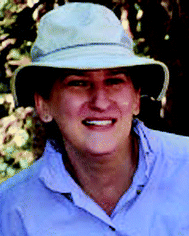Metal-mediated transformations of small molecules
Louise A.
Berben
a and
Jason B.
Love
b
aDepartment of Chemistry, University of California, Davis, CA 95616, USA. E-mail: laberben@ucdavis.edu
bEaStCHEM School of Chemistry, University of Edinburgh, Edinburgh, EH9 3JJ, UK. E-mail: jason.love@ed.ac.uk
Managing the chemical transformations of small molecules such as oxygen, nitrogen, carbon monoxide, hydrogen, and carbon dioxide is a significant challenge that is integral to many of the current approaches to a more sustainable, technologically led society. For example, reactions involving the redox chemistry of oxygen and hydrogen underpin the development of sustainable approaches to energy and transportation, such as in fuel and solar fuel cells. The reduction of nitrogen to ammonia by the Haber–Bosch process is thought to consume 1–2% of the world's energy supply, so there is a clear need to develop new approaches to this age-old reaction. The transformation of carbon dioxide to valuable commodities such as fuels could be one way to mitigate against rising global atmospheric carbon dioxide concentrations, or provide long-term value to carbon sequestration processes. The chemistry of hydrogen, including proton transfer and electron transfer is pertinent not only to hydrogen production and oxidation, but also to the chemistry of nitrogen, carbon dioxide and oxygen. Formation of metal-hydride intermediates is an essential reaction component in all cases and so understanding the interplay between hydrogenation of small molecules in competition with formation of hydrogen from metal-hydrides is essential. As such, the design, development, and exploitation of molecular metal-based catalytic chemistry to overcome kinetic obstacles and/or provide selectivity of products for small molecule transformations are key challenges that face the chemistry community in the 21st century.
This special edition of ChemComm contains contributions to this theme from some of the leading proponents from around the world, and displays the breadth and depth of ideas, techniques, and chemistry ‘flavours’ necessary to provide scientific and technological impact. Key areas are reviewed, including reductive and oxidative processes relevant to the nitrogen cycle, the activation and reduction of CO2, oxidation of H2, and reactions of O2, S2 and PH3. The approaches to these problems are as varied as the molecules themselves; organometallic chemistry, inorganic chemistry and electrochemistry all play an essential part in developing the chemistry of small molecules.
Various reactions of the nitrogen cycle are represented in this themed issue. The Feature Article contributed by Ian Dance entitled Nitrogenase: A General Hydrogenator of Small Molecules introduces the biological enzyme which inspires much of the work by chemists who wish to reduce dinitrogen to ammonia, and to understand and control the properties of catalysts to hydrogenate other small molecules or produce hydrogen from metal hydride species. In keeping with this theme, the issue contains five other articles describing aspects of nitrogen chemistry, including both reduced and oxidized forms of nitrogen. The activation of dinitrogen by a series of molybdenum complexes is described in work by Nishibayashi and coworkers in two separate articles. A titanium complex that activates dinitrogen is described by Kawaguchi. The binding of ammonia by an iron complex is described by Borovik and coworkers. Describing the more oxidized forms of nitrogen, work by Karlin and co-workers introduces a Cu–peroxo complex which effects the reductive coupling of NO to form N2O. A contribution from Koper and co-workers describing electrocatalytic reduction of nitrate explains the affinity of Rh electrodes for both HNO3 and NO3− reduction, and of Pt electrodes for HNO3 reduction only.
The contributions related to carbon dioxide chemistry focus on efforts to study its reduction in the presence of hydride donors so that proton and hydride transfer, in addition to electron transfer are considered. Meyer and co-workers describe the production of synthesis gas (CO and H2) via electrocatalytic CO2 and proton reduction using a ruthenium catalyst. The design of ligands that can assist in the mediation of hydride transfer to CO2 using a rhenium catalyst is included in a contribution from Fujita and co-workers. In related chemistry reported by Cloke and co-workers, CO2 is reductively cleaved to CO and oxo ligands at titanium complexes.
Important in all of the above work, the chemistry of H2 specifically is described by Helm and co-workers in a scheme for electrocatalytic oxidation using nickel P2N2 catalysts. The activation of dioxygen and its incorporation into C–H bonds by a palladium catalyst is described by Mirica and co-workers, and PH3 activation by germanium and tin complexes is described by Power, Ragogna and co-workers. Theopold and co-workers describe the ability of Cr–Cr quintuply bonded dimers to react with a variety of small molecule substrates including S8, substituted hydrazines and azides, and carbon monoxide.
While this collection of articles is not a comprehensive account of all the work going on in this field at the present time it represents many of the key aspects and approaches, and provides an excellent overview. We thank all of the authors for contributing to this special issue and we hope that our readers will find the collection to be as insightful as we have.
| This journal is © The Royal Society of Chemistry 2014 |


